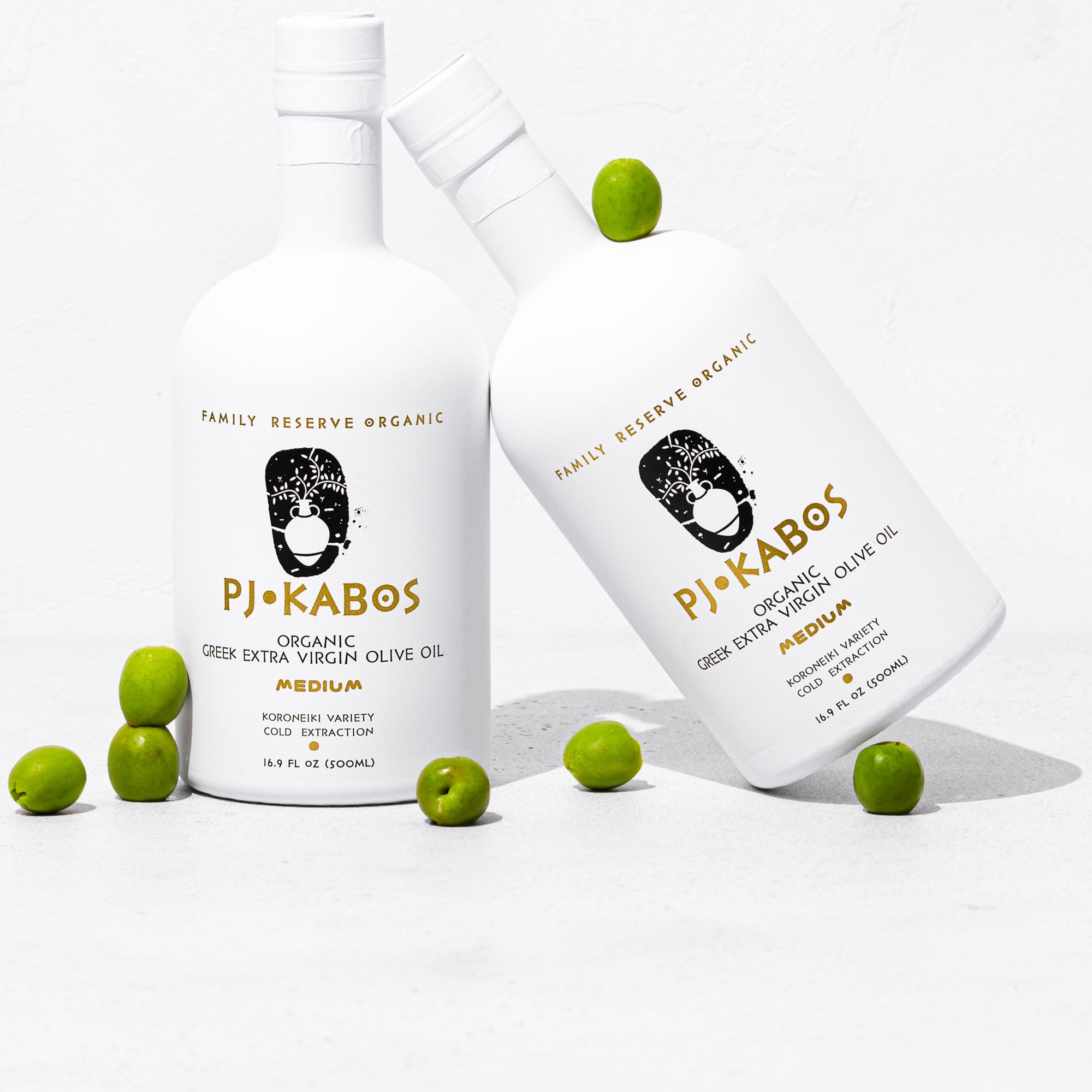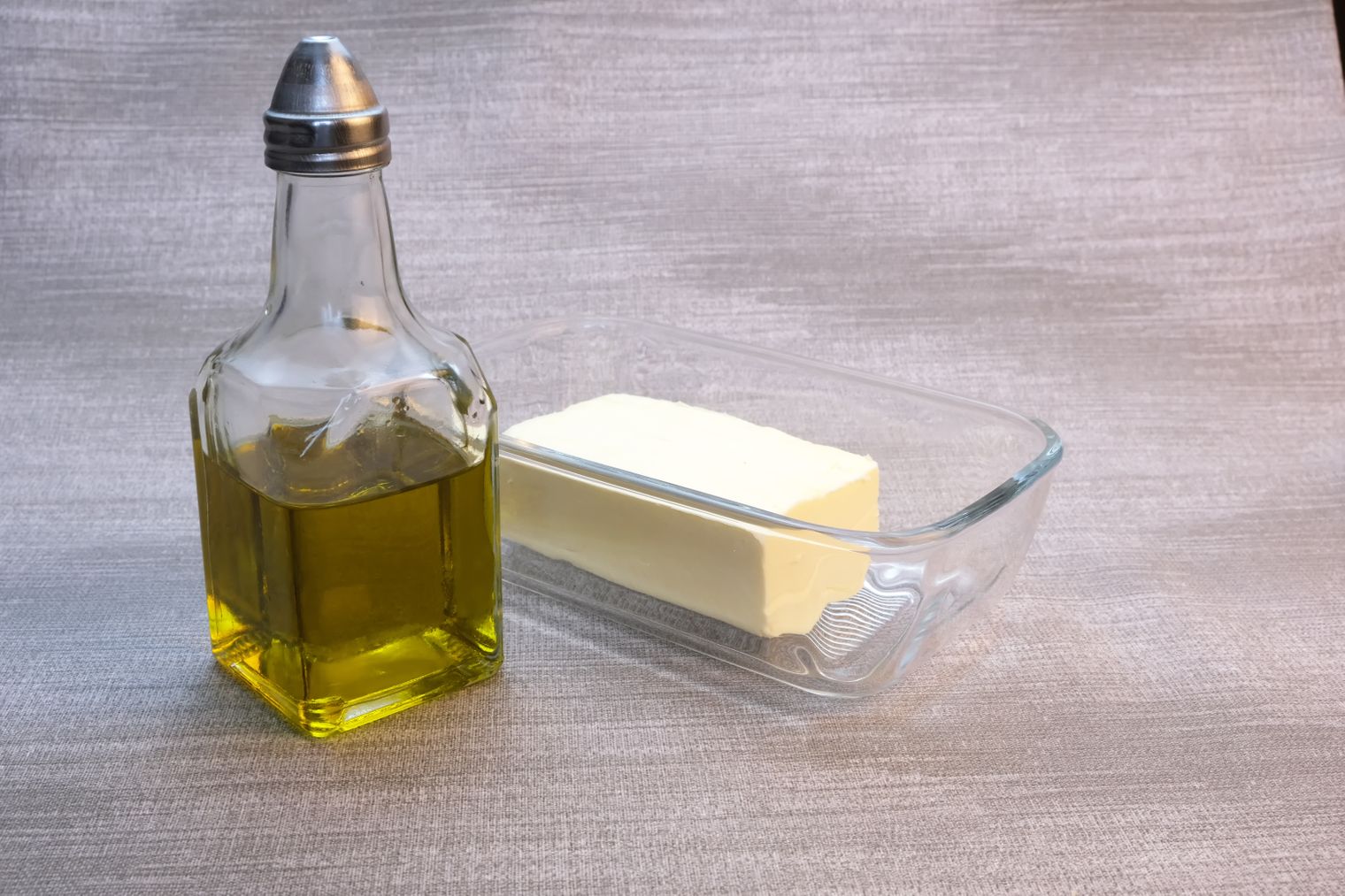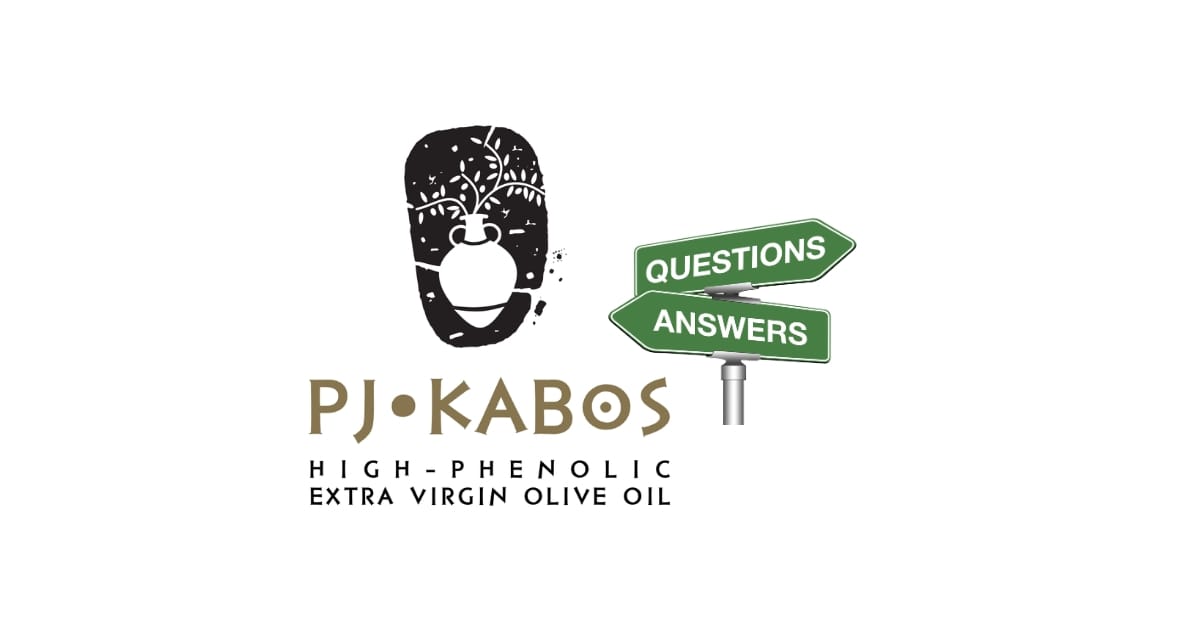Butter can be somewhat polarizing. For some, it calls to mind sinful decadence and holiday cooking with abandon. For those, perhaps on a Keto diet, it’s a healthy, filling, dietary fat that’s an essential component of their weight loss diet. For others (like the French), butterfat is just what you cook with and doesn't really play a role in bad cholesterol or healthy diet conversation.
Olive oil, on the other hand, is widely known to be a healthy fat (move over, coconut oil!), with ample health benefits and plenty of research to back them up. While there are many compelling reasons to cook with olive oil, we’re not ready to write off butter just yet. Why? Cooking with butter – particularly baking with butter – does have its benefits.
Here, we look into the question once and for all. Which is best: olive oil or butter? We’ll dive into the flavor, nutritional makeup, smoke point, and more.
Butter: How is It Made?
If you attended elementary school in America, odds are good you know how butter is made, and you know that butter is far from margarine. While the big brands are no longer hand-churning their butter, the idea is the same.
Here’s a summary of the process. While butter can be made with any milk, we’ll focus on cow’s milk, which is the norm in the industry.
- Supermarket butter starts with raw cow’s milk. When it’s delivered to the factory, it will be pumped directly from the delivery truck into a machine that’s called a “separator.”
- The separator spins, which divides the fat from the liquid. You’re left with two outputs: the fats and the liquid. The liquid is used to make skim milk.
- The fat is put in a tank, where it is pasteurized. Pasteurization is a process in which foods are treated with mild heat (typically less than 212°F) to kill bacteria and extend shelf life.
- From there, it’s moved to a machine called a “churner.” The butter is spun so the fats continue to combine. The excess liquid is called “butter milk” and is used to make ice cream and other products.
- At this stage, salt and any other flavoring is added. Once churned, it’s ready to be packaged and sold.
Like butter, olive oil can be made the traditional way (by mechanically pressing olives), or via more industrialized methods. Both methods persist today. It’s easy to identify the process used by looking at the name of the olive oil.
Here’s an introduction to the different types of olive oil.
- Extra virgin olive oil (EVOO) is made by mechanically pressing olives to extract oil. After the olives are pressed, the oil is separated from the solids via centrifugation. Finally, the oil is filtered to remove any remaining solids. EVOO is never exposed to chemicals or heat at any point in its processing.
- Virgin olive oil, while harder to find, is made by the same method as EVOO. What’s the difference? Essentially, virgin olive oil is allowed to have some minor flavor defects, where EVOO is not. These flavor defects might not even be noticeable to the untrained tester.
- Regular olive oil (or pure olive oil) is more processed than virgin or extra virgin olive oil. Regular olive oil is made from a combination of refined olive oil and virgin olive oil (about 15%-25%). The refined oil is treated with chemicals and heat to remove any flavor defects.
- Light or extra light olive oil is a more refined oil than regular olive oil. In this case, refined olive oil is combined with 5%-10% virgin olive oil. As with regular olive oil, the refined oil is treated with some heat and chemicals to remove flavor defects.
Nutritional Breakdown of Butter vs. Olive Oil
While the different types of olive oil differ in their health benefits and bioactive compounds, these are not typically included on a dietary nutrition label. As such, the label on olive oil looks the same no matter which kind of olive oil you buy, making it tough to judge what's healthiest.
Here’s how olive oil lines up against butter. As you will see, both are similar in terms of types of fat total fat and calorie content, with butter actually containing fewer calories than olive oil. However, olive oil is lower in the saturated fats that put you at risk of heart disease and high LDL cholesterol, and has more heart-healthy monounsaturated fats than butter, being a preference of the American Heart Association and anyone looking for those good HDL and cholesterol numbers (which is easy to see in the total cholesterol per serving amounts below).
Butter Nutrition Facts
In general, a tablespoon of butter contains the following, according to the USDA:
- Calories: 100
- Total fat: 11.5 g
- Saturated fat: 7 g
- Polyunsaturated fat: 0 g
- Monounsaturated fat: 0 g
- Trans Fats: 0.5 g
- Cholesterol Level: 30 mg
- Total carbohydrate: 0 mg
- Protein: 0 mg
Olive Oil Nutrition
In general, one tablespoon of olive oil contains the following, according to the USDA:
- Calories: 119
- Total fat: 13.5 g
- Saturated fat: 1.9 g
- Polyunsaturated fat: 1.4 g
- Monounsaturated fat: 10 g
- Cholesterol Level: 0 mg
- Total carbohydrate: 0 mg
- Protein: 0mg
Which is Healthier: Butter or Olive Oil?
Olive oil, particularly EVOO, has many healthy eating benefits that butter doesn’t have:
- Olive oil is anti-inflammatory. It contains oleic acid, a monounsaturated fatty acid whose anti-inflammatory properties likely contribute to its anticancer, overall wellness, and heart health benefits.
- Olive oil is heart-healthy. Oleic acid also has been shown to reduce blood lipids, including cholesterol and triglycerides, helping to keep cardiovascular disease at bay. Some studies suggest that it also helps lower blood pressure.
- Olive oil may prevent cancer. Anti-cancer: Studies have shown that the oleic acid in olive oil may also suppress genes linked to breast cancer and brain cancer. Phytosterols have also been shown to have anti-tumor properties.
- Olive oil is good for the skin. Olive oil contains the antioxidant vitamin E and nourishing fatty acids, which are known to help improve skin texture when consumed or applied topically.
What is the Difference in Taste?
Science can’t help us here: this all comes down to preference. Olive oil and butter both rank among the most delicious cooking fats in the world, and are two favorites here in the United States. Here’s the difference in flavor, and when to let each one shine.
Butter Flavor
We all know and love the, well, buttery flavor of butter. It lends a kick of creamy richness, and when browned takes on a nutty taste.
According to chefs, butter is best used when caramelizing onions, frying eggs, finishing a steak, and, of course, spreading on top of warm muffins and lightly browned toast.
As butter has a low smoke point, as we’ll get into below, it’s better for quick or lower-heat cooking methods than it is for frying and sautéing.
Olive Oil Flavor
Olive oil has a range of flavors, depending on how it was processed, when the olives were harvested, and more. Regular or light olive oils have a neutral flavor that is somewhat similar to generic cooking oils like canola oil and vegetable oil. Virgin olive oils, on the other hand, have a far more complex flavor profile.
Extra virgin olive oils made with unripe, green olives that are picked early in the growing season often have more intense, vibrant flavors. The tasting notes may be described as pungent, grassy, herbaceous, or peppery. Olive oils made with ripe olives picked later in the season are smoother and more buttery.
As olive oil contains many health benefits, it’s a good choice for most cooking applications. Add it to salad dressings, sauté your veggies in it, or even use in baking to highlight its unique flavor. (This gluten-free lemon olive oil cake is a great place to start.)
What About the Smoke Point?
First of all, what is a smoke point? The smoke point is the temperature at which an oil starts to break down and, yes, smoke. Aside from setting off your fire alarm, this process releases free radicals, which are inflammatory compounds that can cause oxidative stress.
Olive oil is often said to have a low smoke point, but that’s not exactly true. Yes, EVOO has a relatively low smoke point of around 350º to 410ºF. However, refined olive oils have a rather high smoke point that may reach 470ºF.
Butter has a low smoke point of 350°F. However, clarified butter, also known as ghee, has a much higher smoke point of 450ºF. Ghee can be purchased in the store, or made at home.
To make your own ghee, just heat butter in the pan and let it melt. The milk solids will rise to the top of the pot. Just skim it off and keep cooking until the butter is clear. Voila: clarified butter.
Bottom Line — Butter vs. Olive Oil
To sum up, there is certainly space in your life for both olive oil and butter.
For everyday cooking, however, we recommend reaching for olive oil. Olive oil contains more healthy compounds, less saturated fats, and has a higher smoke point for cooking.
That said, we’ll keep topping our pancakes with butter.
Sources
https://www.canstarblue.co.nz/food-drink
https://www.ams.usda.gov/grades-standards/olive-oi
https://fdc.nal.usda.gov/fdc-app.html#/food-details/73s
https://fdc.nal.usda.gov/fdc-app.html#/food-details/17s
https://www.ncbi.nlm.nih.gov/pmc/articles/PMC67/
https://www.ncbi.nlm.nih.gov/pmc/articles/PMC25
https://pubmed.ncbi.nlm.nih.gov/15642702/
https://www.sciencedaily.com/releases/2017/06/
https://www.nature.com/articles/ejcn200929
https://www.ncbi.nlm.nih.gov/pmc/articles/PMC
https://www.thrillist.com/eat/nation/
https://www.aboutoliveoil.org/olive-oil-smoke-point
https://www.seriouseats.com/2014/05/
Product placement
PJ KABOS 'Family Reserve Organic - Medium'
High Phenolic and 2022 Gold-Award Winner.
Declared as 'One of the World's Best Olive Oils'.
Click here to shop.





